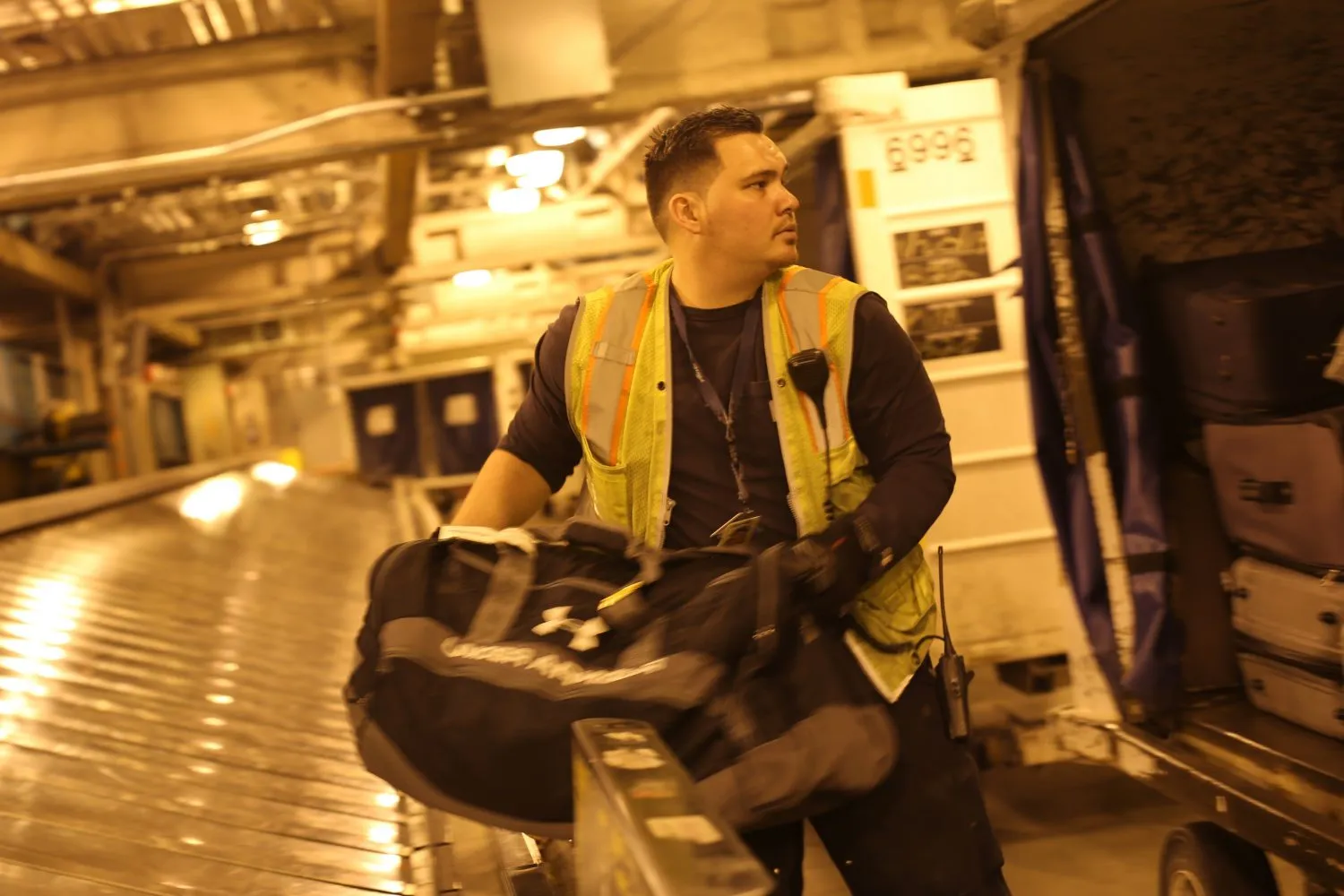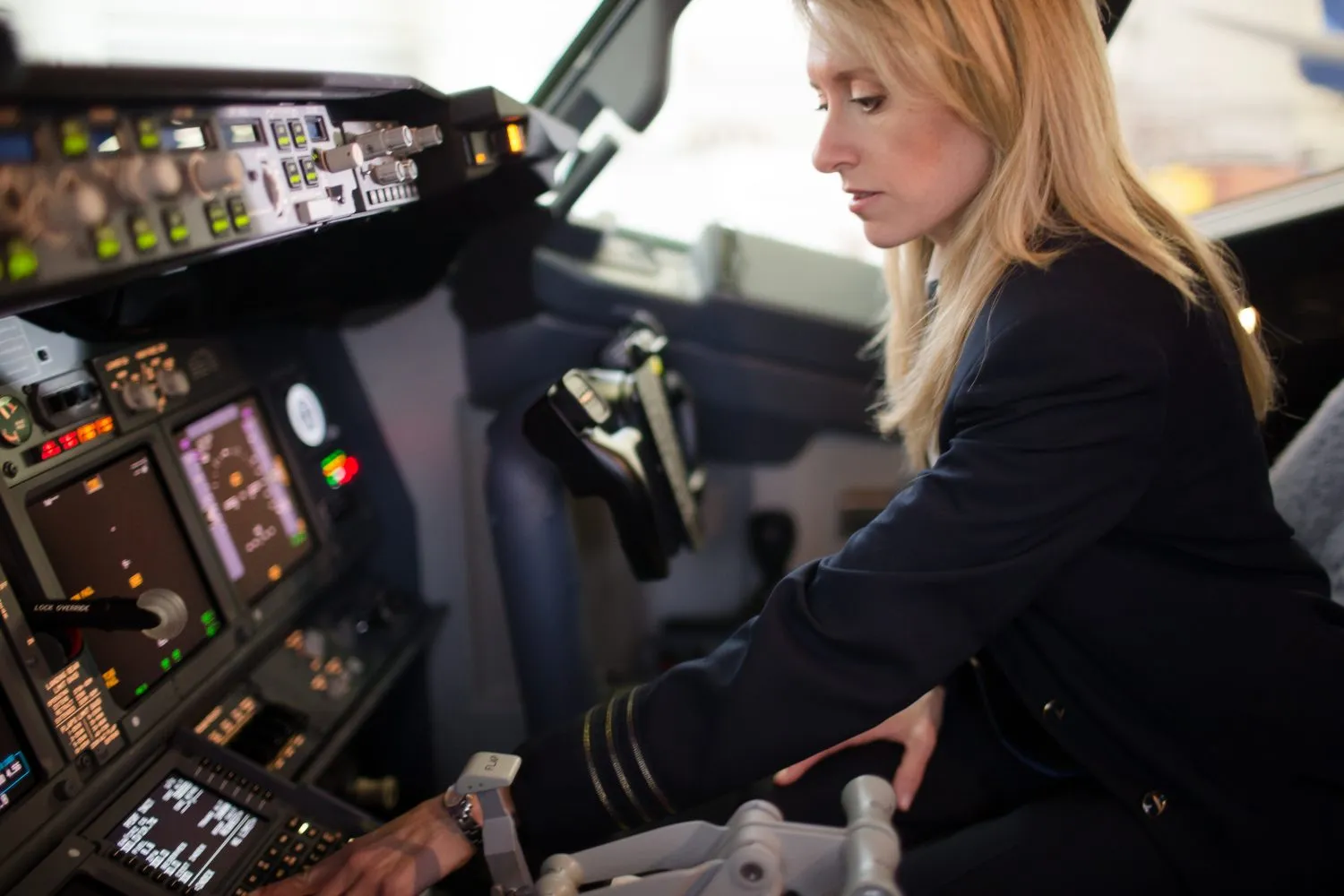Embarking on a journey is more than just reaching a destination; it’s about immersing yourself in the soul of a place. As a seasoned explorer dedicated to the intricate dance between travel, culture, history, and cuisine, I’ve found few places on Earth capture the imagination quite like the vast expanse of Alaska. Often referred to as the “Last Frontier,” figuring out what’s Alaska truly about is an adventure in itself. Beyond the mechanics of getting there – the carefully choreographed process of boarding a flight, handled with scientific precision by airlines ensuring a smooth journey – lies a world waiting to be discovered, a realm where nature reigns supreme and human history is etched into the dramatic landscape.
 Passengers boarding a flight embarking on an Alaskan adventure
Passengers boarding a flight embarking on an Alaskan adventure
Understanding what’s Alaska means looking past the typical travel brochures and delving into its unique character. This is a land of staggering scale, where mountains pierce the sky, glaciers calve into icy fjords, and wildlife roams free across seemingly endless tundra and boreal forests. It’s a place where the rhythm of life is dictated by the seasons, from the midnight sun of summer to the ethereal glow of the Northern Lights in winter. It’s a destination that promises not just sights, but profound experiences that challenge and inspire.
Getting to Alaska involves that essential first step of air travel for most visitors. The process at the airport, often overlooked, is a marvel of logistics designed to get you and your belongings safely on board and on time. Long before you settle into your seat, a complex system involving customer service agents, baggage handlers, technicians, and flight crews is working tirelessly. This intricate preparation, ensuring everything from baggage routing to aircraft safety checks is perfect, is the vital prelude to your Alaskan adventure, bridging the gap between your everyday life and the raw beauty that awaits.
Understanding What’S Alaska: Geography and Nature’s Grandeur
At its core, what’s Alaska? It’s a state unlike any other in the United States, defined by its immense size, rugged terrain, and unparalleled natural beauty. Covering over 665,000 square miles, it’s larger than Texas, California, and Montana combined. Its geography is incredibly diverse, ranging from temperate rainforests in the southeast to vast mountain ranges, active volcanoes, and the Arctic tundra in the north.
The state is home to North America’s tallest peak, Denali (formerly Mount McKinley), standing proudly at 20,310 feet. Glaciers are a defining feature, with tidewater glaciers like those in Glacier Bay National Park offering dramatic displays as ice breaks off into the sea. The sheer scale of the landscape is breathtaking, providing habitats for iconic wildlife.
Alaska’s ecosystems support a rich diversity of animals, including grizzly and black bears, moose, caribou, wolves, and Dall sheep. Its coastal waters teem with marine life, such as humpback whales, orcas, sea otters, seals, and an abundance of fish, notably the famous Alaskan salmon. Experiencing this wildlife in its natural habitat is a highlight of any trip to Alaska.
A Deep Dive into Alaska’s Past: History Etched in Ice and Gold
To grasp what’s Alaska culturally and historically, we must look back through centuries of change. Originally inhabited by diverse indigenous peoples – including the Inupiat, Yup’ik, Aleut, Athabascan, Tlingit, Haida, and Tsimshian – the land is steeped in their traditions, knowledge, and deep connection to the environment. Their history spans thousands of years, long predating European arrival.
Russian explorers first reached Alaska in the 18th century, establishing settlements primarily focused on the fur trade. Russia maintained control until 1867, when the United States purchased the territory for $7.2 million, an act initially dubbed “Seward’s Folly” but soon justified by the discovery of gold.
Discover the Best of What to Do in Downtown Denver – Your Ultimate Guide
Discover the Best Brunch in Denver – A Local’s Guide
Top 10 Places to Visit in Nevada with Family for an Epic Trip
The Klondike Gold Rush of the late 19th century brought a massive influx of prospectors and settlers, dramatically changing the landscape and population. While the rush was short-lived, it left an indelible mark on Alaskan infrastructure and identity. World War II also played a significant role, particularly in the Aleutian Islands campaign, highlighting Alaska’s strategic importance. Finally, after years of advocacy, Alaska became the 49th U.S. state on January 3, 1959. Understanding this complex history is key to understanding what’s Alaska today.
 Ground crew preparing baggage for a flight heading towards Alaska
Ground crew preparing baggage for a flight heading towards Alaska
The logistics of preparing for travel, like the detailed handling of baggage before a flight, underscore the journey taken by countless individuals throughout Alaska’s history. Whether prospectors bringing supplies, settlers carrying their belongings, or modern travelers embarking on vacation, the process of getting people and goods into this remote territory has always been a critical, behind-the-scenes operation. This aspect of travel logistics, though mundane compared to the grandeur of the destination, is a thread connecting past and present Alaskan journeys.
Exploring Alaska’s Vibrant Culture: Blending Tradition and Modernity
What’s Alaska’s cultural identity? It’s a fascinating blend of ancient indigenous heritage, Russian influences, pioneer spirit, and modern American life. Indigenous cultures remain vibrant, celebrated through art, storytelling, language, and traditional ceremonies. Cultural centers and museums across the state offer invaluable insights into these diverse ways of life.
Cities like Anchorage, Fairbanks, and Juneau serve as hubs where urban amenities meet Alaskan grit. You’ll find a thriving arts scene, local breweries, independent shops, and a strong sense of community among residents who embrace the unique challenges and rewards of living in such a wild place. Festivals and events throughout the year, from the world-famous Iditarod Trail Sled Dog Race to local celebrations of harvest and heritage, showcase the resilient and unique spirit of Alaska.
The isolation and proximity to nature have fostered a self-reliant and independent culture. Alaskans are known for their hospitality and willingness to help others, often necessary traits in a state with vast distances and unpredictable weather. This blend of tradition, resilience, and community forms the heart of what’s Alaska’s human landscape.
 Automated baggage system processing luggage bound for Alaskan destinations
Automated baggage system processing luggage bound for Alaskan destinations
Think of the complex systems moving luggage through an airport – a hidden network ensuring your bags make it to your destination. Similarly, Alaska’s cultural fabric is a complex network of interconnected traditions and modern influences, often unseen by the casual visitor but vital to the state’s identity. Just as every bag finds its way through the maze to reach the aircraft bound for Alaskan destinations, every thread of history and culture contributes to the rich tapestry of the Last Frontier.
Adventures Await: Things to Do in What’S Alaska
If you’re asking “what’s Alaska offer in terms of experiences?”, the answer is simple: adventure at every turn. For outdoor enthusiasts, the possibilities are limitless. Hiking trails range from easy coastal walks to challenging climbs in national parks. Kayaking or canoeing allows you to explore serene lakes and coastal waters, often getting up close to wildlife.
Wildlife viewing is a major draw. Boat tours are popular for spotting whales, puffins, and other marine animals. Bear viewing trips, often by floatplane to remote locations, offer unforgettable encounters. Fishing for salmon and halibut is a quintessential Alaskan experience, whether fly-fishing in a river or deep-sea fishing in the ocean.
Winter brings its own set of adventures. Dog sledding is a historical and thrilling way to traverse the snowy landscape. Skiing, snowboarding, and snowshoeing are popular activities. And, of course, Alaska is one of the best places in the world to witness the mesmerizing aurora borealis, or Northern Lights, dancing across the dark winter sky. For those seeking unique travel experiences, what’s Alaska serves up exactly that.
A Taste of the North: Culinary Highlights
What’s Alaska’s culinary identity? It’s deeply tied to its abundant natural resources, particularly from the sea and the land. Alaskan salmon, renowned globally for its quality and flavor, is a cornerstone of the local diet, served grilled, smoked, baked, or in chowders. Halibut, cod, and king crab are other must-try seafood items, incredibly fresh and often caught locally.
Beyond seafood, Alaskan cuisine features game meats like reindeer or caribou sausage, wild berries (blueberries, salmonberries, cloudberries), and locally sourced vegetables in the summer months. Restaurants, from fine dining establishments to casual fish shacks, proudly feature these regional ingredients. Trying a fresh-caught meal while overlooking an Alaskan harbor is an experience in itself.
While not known for complex dishes, Alaskan food emphasizes freshness and quality, reflecting the bounty of its natural environment. It’s simple, hearty, and satisfying – perfect fuel for a day of exploration.
 A pilot performing pre-flight checks before a journey to the Alaskan wilderness
A pilot performing pre-flight checks before a journey to the Alaskan wilderness
Just as a pilot meticulously checks every system before taking flight into the vast Alaskan wilderness, experiencing the local cuisine requires a bit of exploration. It’s about checking the menu for local catches, verifying the source of ingredients, and ensuring everything is prepared to showcase the natural quality. This attention to detail, whether in aviation safety or culinary preparation, is key to a successful and enjoyable Alaskan journey.
Planning Your Journey to What’S Alaska
Visiting Alaska requires some planning, largely depending on what you want to see and do. The peak season is summer (June to August), offering the warmest weather, longest daylight hours, and best access to many parks and activities like cruising and hiking. This is the best time for wildlife viewing, though also the busiest and most expensive.
Spring and Fall offer shoulder season travel with fewer crowds and potentially lower prices, though weather can be unpredictable. Spring sees wildlife emerging, while Fall brings stunning autumn colors and the start of aurora viewing season. Winter (November to March) is ideal for Northern Lights seekers, winter sports enthusiasts, and those looking for a truly unique, quiet experience, though daylight is limited.
Transportation within Alaska can be challenging due to the vast distances. Flying is common for getting between major cities and remote areas. The Alaska Railroad connects Seward, Anchorage, Denali, and Fairbanks, offering scenic journeys. Driving is possible on a limited road system, mainly connecting major towns and national parks like Denali. Cruising is a popular way to see the southeast Inside Passage, offering access to coastal towns and glaciers.
Packing layers is essential year-round, as weather can change quickly. Be prepared for rain, even in summer. For summer trips, bring bug spray! Researching accommodations and tours in advance, especially during peak season, is highly recommended.
 Final checks being performed on an aircraft before departing for Alaska
Final checks being performed on an aircraft before departing for Alaska
Just before your flight departs for Alaska, final checks are performed, ensuring every system is ready for the journey. Similarly, the final steps of planning your trip – confirming reservations, packing your bag, reviewing your itinerary – are crucial to ensure everything is ready for your arrival in this incredible state. Being well-prepared, like an aircraft cleared for take-off after rigorous checks, ensures your Alaskan experience can truly begin without a hitch.
What’S Alaska: A Conclusion
So, what’s Alaska all about? It is a place of unparalleled natural beauty, rich history, and a resilient culture shaped by the land and its people. It’s a destination that challenges you to step outside your comfort zone, breathe in the crisp air, witness the raw power of nature, and connect with a unique way of life. From the precision of the flight that gets you there to the vast, untamed wilderness that greets you, Alaska is an experience that stays with you long after you leave. If you’re seeking adventure, stunning landscapes, and a glimpse into a world still largely ruled by nature, exploring the Last Frontier is an absolute must.
Frequently Asked Questions About What’S Alaska
- Q: What is the best time of year to visit Alaska?
A: The best time depends on your interests. Summer (June-August) is ideal for warmer weather, long daylight, and activities like hiking and cruising. Winter (November-March) is best for Northern Lights and winter sports. Spring and Fall offer fewer crowds. - Q: What wildlife can I expect to see in Alaska?
A: Alaska is home to bears (grizzly and black), moose, caribou, whales, seals, sea otters, eagles, and many other species. Wildlife viewing opportunities are abundant, particularly in national parks and coastal areas. - Q: How do I get around Alaska?
A: Due to the vast distances, common transportation includes flying between cities, taking the Alaska Railroad, driving on the limited road network, or exploring coastal areas via cruise ship or ferry. - Q: Is Alaska expensive to visit?
A: Alaska can be relatively expensive, especially during the peak summer season. Costs for flights, accommodation, tours, and transportation can add up. Traveling in the shoulder seasons may offer some savings. - Q: What is the “Midnight Sun”?
A: The Midnight Sun is a natural phenomenon occurring during the summer months north of the Arctic Circle where the sun remains visible for 24 hours a day. Southern parts of Alaska also experience very long daylight hours in summer.
